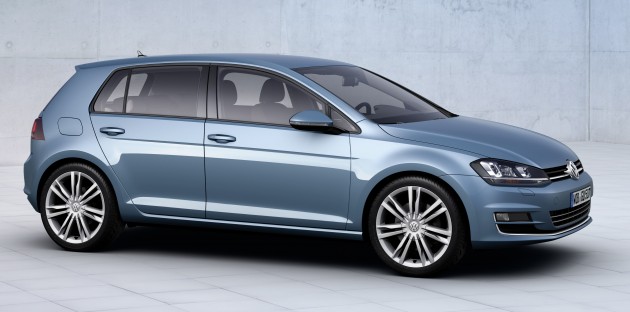
The all-new 2013 Volkswagen Golf Mk7 has been officially unveiled in Berlin, Germany. Here are the images, as well as details of the much-anticipated new model.
The seventh-generation of the immensely popular C-segment hatchback moves with the times, which means we get a more efficient car, and a longer, wider but lower Golf. The new Golf measures 4,255 mm long and 1,799 mm wide, which is 56 mm and 13 mm more than the Mk6 Golf. The bigger footprint combines with a lower roofline – at 1,452 mm tall, the Mark 7 Golf is 28 mm lower than the car it replaces.
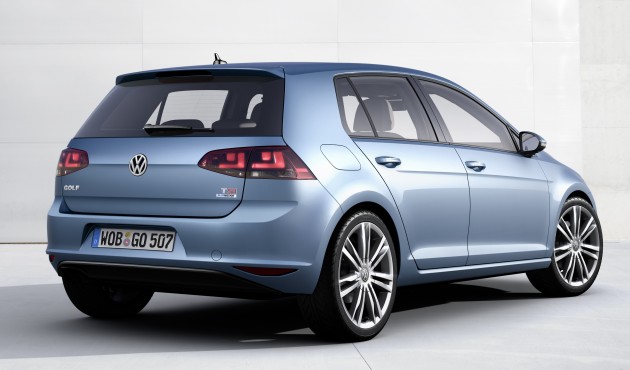
This is the biggest Golf the world has ever seen, and it’s more spacious than ever too, thanks to a wheelbase that’s 59 mm longer than the Mk6′s 2,575 mm measurement. This frees up 14 mm in cabin length and offers 15 mm extra rear legroom. More space numbers come in the form of shoulder room for the front and rear occupants, which are up by 31 mm and 30 mm respectively.
The bigger cabin is matched by a bigger boot – volume is up by 30 litres to 380 litres, while the boot floor is wider by 228 mm. A lower boot lip eases lifting heavy items, and this line has been lowered by 17 mm in the new Golf. Even the boot aperture has been widened by 47 mm – no dimension was left untouched.
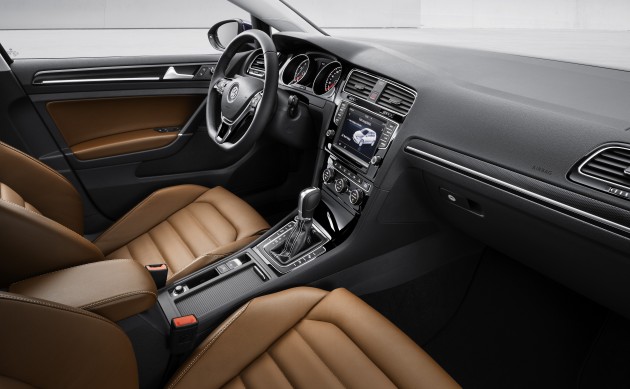
The Mk6 was fine ergonomics-wise, but VW has nonetheless managed to find some things to tweak. The gear lever has been raised by 20 mm, and there’s a small distance increase between the gas and brake pedals.
The steering wheel adjustment range is now bigger, while the introduction of an electronic parking brake increases centre console stowage space. The dashboard is more driver focused than before, with a centre stack angled towards the driver and a design that “cordons off” the controls from the passenger. Looks much more premium, too.
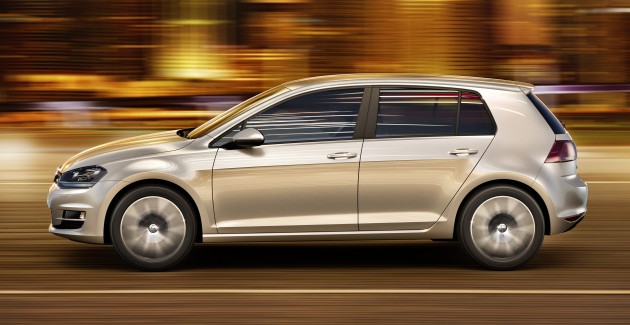
Unlike the Mk6, which was essentially a modified Mk5, the Mk7 Golf gets new underpinnings – in fact, it’s the first Volkswagen to use the group’s flexible MQB platform, after the third-generation Audi A3 debuted it earlier this year.
MQB stands for Modularer Querbaukasten, which some have translated to “Modular Transverse Matrix.” MQB, a stronger but lighter platform, will be used across the VW Group’s transverse front engine FWD cars from Skoda to Audi, easing production and costs considerably.
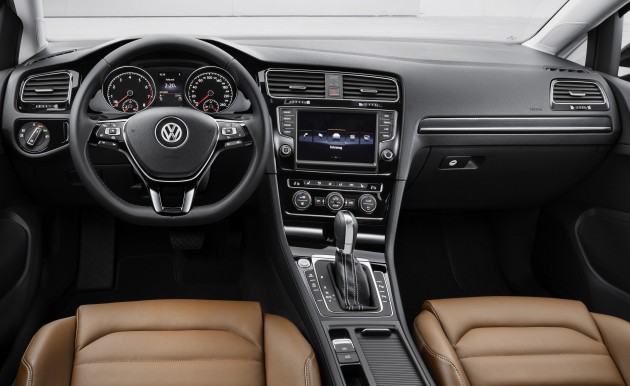
The new Golf may be bigger, but it is also up to 100 kg lighter than its predecessor. The diet consists of higher use of hot-formed ultra high strength steel and tailored blanks within the car’s structure (23 kg saved), more aluminium suspension components (26 kg) and lighter engines. An example of the latter is the new EA211 1.4 litre turbo petrol engine, which is 22 kg lighter than the equivalent EA111.
The kit list is impressive. Available equipment includes a Golf GTI-style electronic differential lock, adaptive cruise control with emergency brake function up to 30 km/h, lane assist, fatigue detection, traffic sign detection and a new multi-collision brake. The latter automatically triggers the brake booster upon impact to ensure the Golf stops in the shortest possible distance. The Mk7 can also be had with an overhead parking system with 360-degree graphics, like in the Touareg.
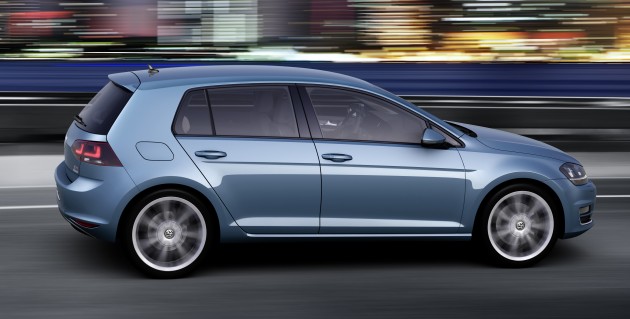
For the engines, let’s first focus on the petrol units available at point of introduction. The base engine is a 1.2 litre turbocharged unit with 85 PS and has a claimed 20.4 km/l fuel consumption. One step up is a 1.4 litre turbo with 140 PS and 20.9 km/l. The reason why the latter’s FC is so low is a cylinder deactivation system that stops two cylinders between 1,400 and 4,000 rpm. The 1.4 TwinCharger engine with 160 PS, as found in the Mk6 Golf TSI, has been dropped from the lineup. Word is that it was very expensive to produce.
They’re not likely to sail here, but the diesel range is a two-engine team of a 1.6 and a 2.0, both modified from the current TDIs. The 105 PS 1.6 litre mill boasts 26.3 km/l, which is great, but the eco-specialist Bluemotion version claims a hybrid-beating 31.2 km/l. The CO2 emission rating is 14 g/km better, at just 85 g/km. Meanwhile, the 2.0 litre oil burner is capable of 150 PS and 24.3 km/l.
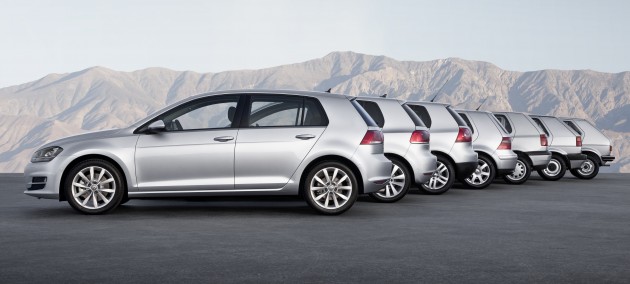
All engines can be had with VW’s dual-clutch DSG gearbox and have auto stop-start and brake energy recuperation as standard. A note on the DSG, which is now programmed to disconnect the engine on a trailing throttle to aid fuel economy. There’s also an optional system that offers selectable Eco, Sport, Normal and Individual driving modes. Comfort mode is added, if one ticks the box for optional adaptive dampers.
The Mk7 Golf is making its debut as a five-door hatch, although it’s expected that a three-door as well as a bigger Plus five-door, Variant wagon, sedan and cabriolet will join the family later on. Also on the way are the performance variants, the GTI and Golf R – word on the grapevine has it that the GTI will be previewed in concept form at the upcoming Paris show.
http://paultan.org/2012/09/05/2013-volkswagen-golf-mk7-first-images-and-details/


No comments:
Post a Comment